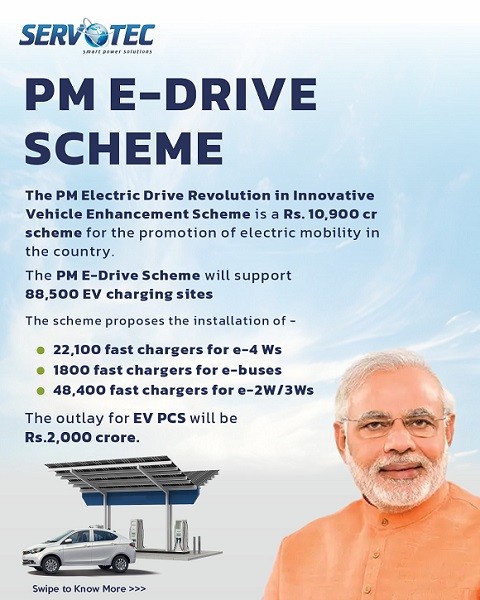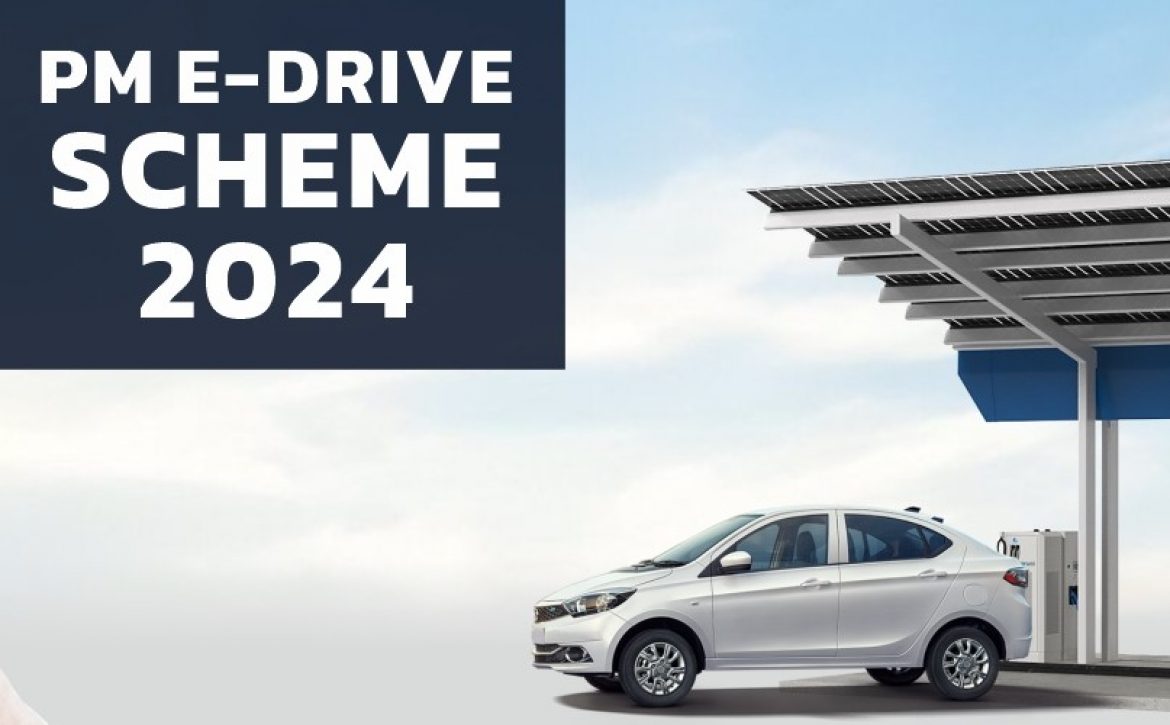PM E-Drive Scheme: All you need to Know About
On 11th September 2024, the Government of India announced the launch of the PM Electric Drive Revolution in Innovative Vehicle Enhancement (PM E-DRIVE Scheme). This initiative aims to propel India towards a sustainable and electric mobility future. With an investment of ₹10,900 crore over the next two years, the scheme focuses on promoting electric vehicles (EVs) across various categories and establishing essential infrastructure for their smooth operation.
What is the PM E-Drive Scheme?

PM E-DRIVE stands for Prime Minister’s Electric Drive Revolution in Innovative Vehicle Enhancement. This comprehensive scheme has been designed to push for large-scale adoption of electric vehicles, reduce the country’s dependence on fossil fuels, and tackle environmental concerns like air pollution.
The PM E-Drive Scheme is a government initiative aimed at accelerating the adoption of electric vehicles (EVs) in India. Announced with a budget of ₹10,900 crore, this scheme focuses primarily on electrifying two-wheelers, ambulances, and commercial vehicles like trucks, with the goal of reducing India’s reliance on fossil fuels and curbing vehicular emissions. Unlike previous programs, such as FAME I and FAME II, which offered broad incentives for electric cars and other EVs, the PM E-Drive Scheme takes a more targeted approach, excluding electric cars and emphasizing public and commercial transportation sectors that are slower in EV adoption.
Key Components of the PM E-DRIVE Scheme
The PM E-DRIVE Scheme consists of various components to ensure the holistic promotion and adoption of electric mobility in India. Here’s a breakdown of the major elements:
1. Subsidies and Incentives:
- ₹3,679 crore has been allocated for subsidies to incentivize the purchase of electric two-wheelers (e-2Ws), electric three-wheelers (e-3Ws), e-ambulances, e-trucks, and other emerging electric vehicles.
- These incentives are crucial for making EVs more affordable and accessible to the general public, helping to increase their penetration across different sectors.
- Special E-vouchers will be provided to buyers, enabling them to avail of demand-side incentives under the scheme.
2. Incentives for E-trucks:
A dedicated allocation of ₹500 crore has been made to incentivize the deployment of electric trucks (e-trucks) in the country. These incentives are expected to accelerate the transition of the logistics and goods transportation sector towards cleaner electric vehicles.
3. E-ambulances:
₹500 crore has also been reserved for the deployment of e-ambulances, further modernizing emergency medical services by introducing environmentally friendly, battery-operated ambulances across the nation.
4. Infrastructure Development:
The scheme lays a strong emphasis on building the necessary charging infrastructure for electric vehicles. To this end:
- 22,100 fast chargers will be installed for four-wheelers (e-4Ws).
- 1,800 fast chargers will be set up for electric buses (e-buses).
- 48,400 fast chargers will cater to electric two-wheelers (e-2Ws) and three-wheelers (e-3Ws).
- An additional ₹2,000 crore will be allocated for the EV public charging station (PCS) network, ensuring that EV users have access to charging facilities across the country.
5. Public Transport Electrification:
A significant ₹4,391 crore has been set aside for the procurement of 14,028 electric buses (e-buses) to be operated by State Transport Undertakings (STUs) and other public transport agencies. This move is expected to enhance public transport while significantly reducing carbon emissions and urban air pollution.
6. Preference for E-buses in Cities/States:
Under the PM E-DRIVE Scheme, priority will be given to cities and states that are actively procuring electric buses after scrapping old State Transport Undertaking (STU) buses. This step ensures that regions transitioning to eco-friendly buses will benefit the most from government support.
Expected Impact of PM E-DRIVE Scheme
The PM E-DRIVE Scheme is set to transform India’s mobility sector by accelerating the transition to electric vehicles. With substantial subsidies, infrastructure investments, and a focused approach on electrifying public transport, the initiative will bring the following benefits:
- Cleaner Air: The shift from internal combustion engine vehicles to electric vehicles will reduce air pollution, especially in urban areas.
- Energy Independence: By reducing reliance on fossil fuels, the scheme will help India in its energy independence journey.
- Boost to EV Industry: The incentives and infrastructure boost will drive growth in India’s electric vehicle manufacturing sector.
- Better Public Transport: With the electrification of thousands of public transport buses, citizens can expect a smoother, quieter, and cleaner commuting experience.
Conclusion
The PM E-DRIVE Scheme is a bold and forward-thinking initiative by the Indian government to promote electric mobility. With substantial financial support, infrastructure development, and targeted incentives, the scheme will significantly accelerate the adoption of EVs across different sectors. This move is a major step towards achieving India’s green mobility goals, reducing carbon emissions, and setting an example for sustainable urban transport solutions. India is taking a giant leap into the future with this electric revolution, paving the way for a cleaner, greener tomorrow.

